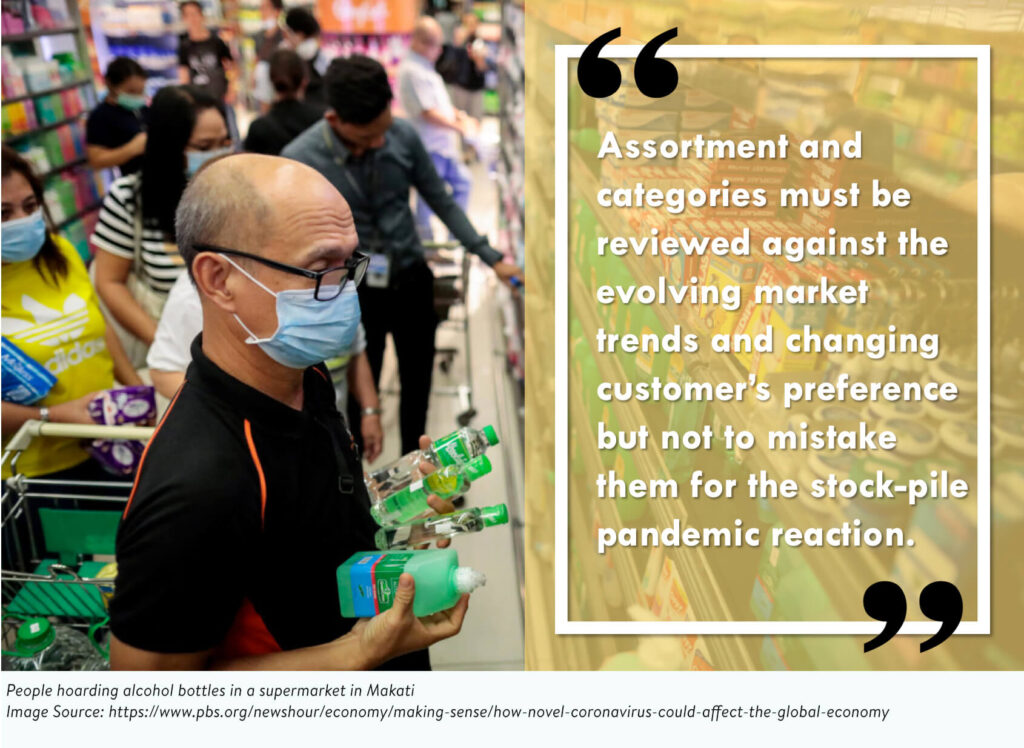
Times are changing, and many of these changes will either stay for a long while or continue to persist after the pandemic. The pandemic has accelerated buying trends, thus creating new priorities and psychological profiles of shoppers. This has made understanding consumer behavior more important than ever, yet has never been more intricately challenging. Brands are finding that balance between becoming agile and accelerating digitalization while maintaining brand authenticity and relevance to the market.
The Philippines has one of the longest lockdown and community quarantine relative to the pandemic. Even as contagion is still present, the government is slowly relaxing restrictions to revive the economy. But with thousands either losing their jobs, taking on pay cuts or being placed on furloughs, consumer spending has decreased.
The good news is – PEOPLE WILL CONTINUE TO SPEND.
In fact, the pandemic brought in new retail channels, accelerated digitized transactions, introduced supplemental contactless services such as call/text to order for a store or curbside pick-ups — all anchored on serving customers and keeping them safe. While the on-line and off-line spending combined may still fall short versus the pre-pandemic state, spending continues but will be intentional and controlled in the new reality. With limited budgets, the share of wallets will primarily be for food, personal care, and household cleaning. Travel, leisure, and entertainment will slowly return but will take a back seat behind domestic priorities. The challenge now for retailers is to secure that share of wallet from the adjusted and limited budget for spending.
With the majority of Filipinos still fearing contagion, how will the market respond and behave in the new reality? How should businesses adapt and evolve to better serve consumers? We share our thoughts and observations from our diverse retail and vast market to help chart strategic business directions in order to stay relevant in the highly complex retail industry during unprecedented unpredictable times.
While e-commerce is on the rise and more Filipino consumers have learned to embrace on-line shopping and cashless transactions, consumers will continue to long for the usual ‘experience’. Even as digital shopping provides convenience in a click and offers a much better promise of safety, it fails to satisfy the need for personal connection that physical stores provide. Chatbots fall short in extending immediate response-action that consumers are pampered with by store personnel. For many, shopping is a therapeutic activity where the journey in itself is a form of relaxation and entertainment, while the freedom and ability to see-touch-feel the products are gratifying. In this social human nature for engagement and connectivity lies the security of physical retailing enhanced with technology.

Pre-pandemic, value-for-money was one of the most abused marketing propositions that it has somehow lost its spark. Because it is human nature to value what is lost or lacking, this jargon has finally regained its popularity and relevance. With credits to the uncertainties and unpredictability of the times, VFM is now a critical theme for the new reality. For the consumer, it is getting more for what they paid for. For the retailer, it is acknowledging that one’s role is no longer simply providing the goods at the right time, place, and price; it is addressing the customer’s expectations of paying for goods that have excellent quality, freshness, and affordability. VFM is communicating well to the consumers that money spent in the store, is money that is worked hard for, is patronage that is valued by the retailer.
As soon as news of the virus hit the streets, establishments felt the painful impact of a rapidly declining foot traffic. Shoppers made fewer trips, quicker visits, and fortunately, higher spend. However, the magic touch of impulse buying lost its power, cross-selling and up-selling became more challenging with limited people shopping in-store. In a snap, retailing changed and the agile organizations embraced digital technology and other contactless shopping options, linking brick and mortar to online platforms. If there is anything good that the crisis brought, it is the long-overdue advancement of shopping technology and the overall improvement of convenience and service to customers. In reality, though, this shift in shopping behavior that drove all these retail innovations is due to fear of contagion. To slowly ease customers back into physical stores, retailers must continue to prioritize the health and safety of consumers. Physical stores must not be complacent in communicating and religiously practicing safety and precautionary measures. Consumers will only return to the store or slowly revert to their usual shopping behavior if and only if they are confident and trusting enough of the brand they patronize.
In welcoming the return of warm bodies, store layouts must be adjusted and conformed to evolving habits and preferences. There must be a balance between smart layouts and planograms with considerations for efficient implementation of social distancing, lower capacities, and directed customer flow. It is likely that safety signs and hand sanitation sections will become a staple in every store’s blueprint. The usual visual merchandising tactics – cross-merchandising, free-standing units, animations, on-shelf and off-shelf displays, impulse stacks, sidekicks and end caps – all must be taken more seriously to optimize space planning and drive larger baskets. While every brand is into innovation, this may be the right time to put in place smart shelf technology for aesthetics and customer analytics.
As much as traffic count will be key to survival as pandemic eases, every opportunity must be taken to grow the customer’s basket. Assortment and categories must be reviewed against the evolving market trends and changing customer’s preferences but not to mistake them for the stock-pile pandemic reaction. For instance, the emergence of the home or domestic economy opened the gateways for the baking category to rise from simply being a niche; health essentials became a destination. With issues and concerns on product availability in the past months, brand loyalty waned, allowing secondary or even nameless brands into the retail mainstream. As travel takes the back seat, consumers take comfort in food to take them to places with nothing preventing them from tapping into available channels that could satisfy their global cravings. To secure customer patronage and market interest, variations on relevant assortment must be considered. Simplifying the buying process would be helpful as well in tapping into local markets and growers and start-up entrepreneurs to beef up product offerings. To have a seamless interface across front and back end operations, there may arise the need to reinvest in demand forecasting, assortment and customer analytics to respond to the disruptions in supply networks and in customer behavior as exemplified in the unprecedented COVID-19 pandemic.

IN CONCLUSION :
For businesses to survive and stay relevant, they need to develop a strong understanding of the aspects of the new realities in retail. Consumers will ease their way into brick and mortars as the pandemic restrictions relax because it is natural for human beings to want to connect and engage – an experience they find more satisfying than e-commerce transactions even as they have learned to adopt it. With paranoia prevailing, there will be fewer trips but with potentially higher spending. Nonetheless, to bring them back into your stores and regain confidence, there is a non-negotiable requirement of being promised health and safety. Faced with decreased customer traffic, lower sales productivity, and inventory issues, brick and mortar stores need to adjust by adding new and relevant product lines to drive sales, rationalize depth and breadth of variations and sizes to accommodate emerging categories. Such adjustments will require interface with store planning and visual merchandising to optimize space. As innovation helps brands to stay relevant, and product offerings and service keep customers’ business, how the brands behaved towards helping others in the midst of the pandemic define the patronage of consumers-turned-advocates. What will continue to resonate in the hearts of the consumers is how brands placed precedence on genuine concern and service for the community it serves beyond business.